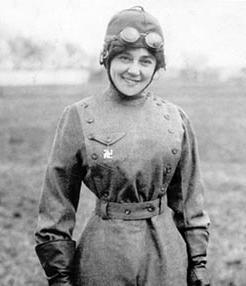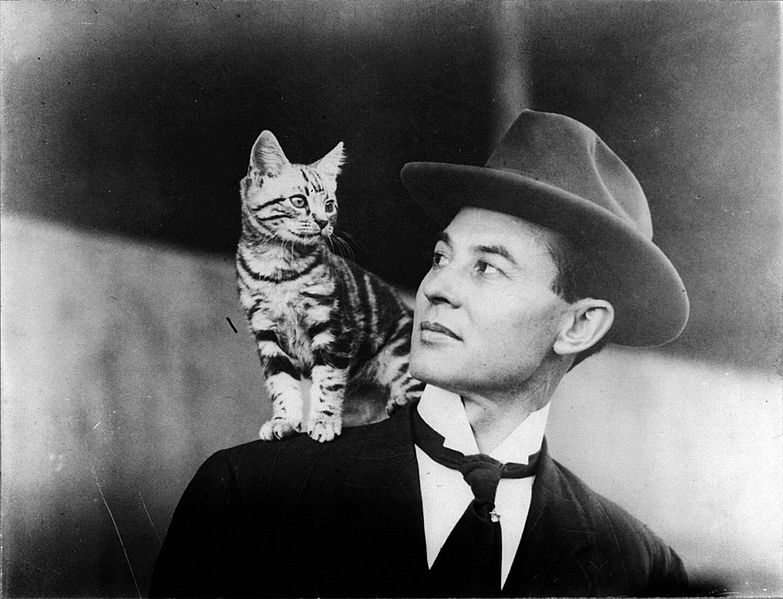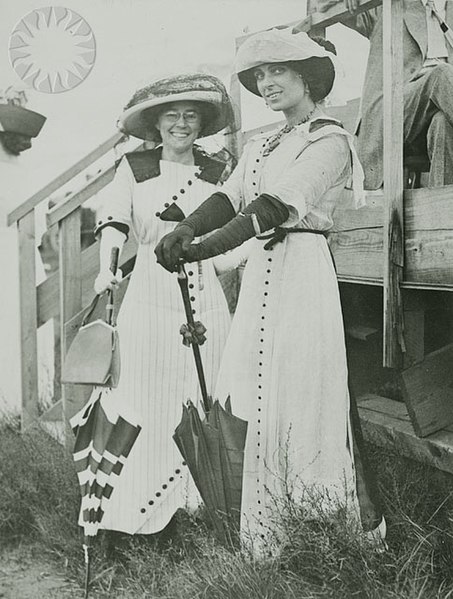Matilde Moisant stands out among the brave aviators of the early twentieth century. Her incredible voyage broke social standards, propelling her into history as one of the most outstanding women in aviation. Matilde’s tale is a monument to perseverance, determination, and the relentless pursuit of her aspirations, from her humble origins to her awe-inspiring achievements. Join us as we uncover the enthralling story of Matilde Moisant, an aviation hero who soared to tremendous heights and left an unforgettable impression on the world.
Who is Matilde Moisant?
Growing up in a world marked by both poverty and an insatiable thirst for excitement, Matilde Moisant’s early years were defined by an unyielding desire for adventure. Born on September 13, 1878, in Earl Park, Indiana, Matilde was the daughter of Médore Moisant and Joséphine Fortier, both of French Canadian descent. Her siblings, including George, John, Annie M., Alfred Moisant, Louise J., and Eunice Moisant, shared her journey through life.
Matilde’s childhood was a nomadic one, characterized by frequent relocations as her father sought employment as a farmer across the Midwest. Financial hardships were a constant companion as the family grappled with the challenges of making ends meet.
Despite the hardships she faced, Matilde’s spirit remained undaunted, and her thirst for adventure only grew stronger. From an early age, she possessed a natural curiosity and an insatiable desire to explore the world around her. Every opportunity to venture into new territories and embrace novel experiences was met with enthusiasm. As she matured, her longing for the unknown expanded, and her imagination took flight, fueling her dreams of venturing beyond the confines of her immediate surroundings.
The Moisant Family
The Moisant family, particularly Matilde, faced significant upheaval due to John Moisant’s involvement in Salvadoran politics. However, it was John’s passion for aviation that would ultimately reshape their lives. Seeking refuge in New York City, John convinced his siblings, Alfred and Matilde, to embark on a remarkable endeavor: the establishment of an airstrip, an aircraft factory, and a flying school, thus giving birth to Moisant International Aviators, Inc.
While John pursued his aviation dreams in France, leaving his siblings behind in New York, he ventured into uncharted territory. With no prior experience in flying, he took on the audacious task of constructing an airplane with an aluminum body. Tragically, his inaugural flight ended in a crash. Undeterred, John persisted in his vision and commenced building a second aircraft while simultaneously receiving flying lessons from the renowned French aviation designer Louis Blériot.
On his sixth flight, John accomplished an astonishing feat that etched his name into the annals of aviation history. He shattered three world records in a single flight, becoming the first pilot to carry a passenger from Paris to London and the first to cross the English Channel in the same plane. This remarkable achievement was even more impressive considering that Blériot had accomplished the Channel crossing solo just the year before.
Meanwhile, back in the United States, Alfred and Matilde toiled tirelessly, establishing the necessary infrastructure for their aviation enterprise. With John’s eventual return, the Moisant International Aviators, Inc. was formed, comprising three Frenchmen, three Americans, and a Swiss pilot. Together, they embarked on a series of captivating air exhibitions, popularly known as “air circuses,” captivating audiences across the United States. Matilde played a vital role in this operation, meticulously organizing logistics such as lodging and meals as they traveled from one exhibition to another.
Driving Force Behind Matilde’s Career Pursuit
Tragically, John’s promising career as an aviator was abruptly halted when he lost his life in a fateful crash during his pursuit of the Michelin Cup for speed and endurance in New Orleans in December 1910. This devastating event marked the end of John’s remarkable five-month aviation journey, filled with numerous accomplishments. However, despite this heartbreaking setback, the Moisant International Aviators persevered captivating and inspiring audiences with their awe-inspiring aerial performances throughout the United States.
Following the untimely demise of her brother, Matilde Moisant, who had been an invaluable support to her siblings within the Moisant International Aviators, Inc., courageously assumed the leadership of the air circus. Matilde took her time, allowing herself seven months to mourn her brother’s loss before summoning the strength to step into his shoes. At the age of 33, she relocated to the Atlantic City Hotel in Garden City, New York, in close proximity to the Moisant field, where she commenced flying lessons under the tutelage of André Houpert, a French flying instructor previously employed by John.
Matilde proved to be an exceptional student, displaying remarkable aptitude and a swift learning curve. In fact, she set a record for the shortest cumulative training time to obtain a pilot’s license, achieving this feat in a mere 32 minutes. Remarkably, this milestone was reached only a year after her brother’s tragic passing in 1911. Her rapid progression within the aviation field set her apart and made her a source of inspiration for aspiring female pilots. Years later, at Matilde’s request, the Aero Club of America officially confirmed that her record still stood as the shortest training time in the history of pilot licensing, solidifying her legacy.
Matilde’s Aviation Career
Embarking on her aviation journey at her brother Alfred’s Moisant Aviation School on Long Island, New York, Matilde Moisant defied the norms of her time. In the early 1900s, access to aviation instruction for women was scarce, making Matilde’s achievements all the more remarkable.
On August 13, 1911, Matilde accomplished a significant milestone by obtaining her pilot’s license, becoming only the second female in the United States to be certified by the prestigious Aero Club of America. Her friend Harriet Quimby had earned the distinction just a few weeks earlier, blazing a trail for women in aviation. This groundbreaking accomplishment not only marked a personal triumph for Matilde but also signaled a growing recognition of women as capable and proficient pilots.
Equipped with her pilot’s license, Matilde set her sights on a career in barnstorming and display flying. Swiftly establishing herself as a skilled and fearless aviator, she captivated audiences with her audacious aerial maneuvers and captivating performances.
In September 1911, Matilde took part in an air exhibition at the Nassau Boulevard airstrip in Garden City, New York, where she competed against Hélène Dutrieu, a renowned Belgian flyer. During this electrifying event, Matilde shattered the women’s altitude world record by ascending to a breathtaking height of 1,200 feet (370 meters). Her remarkable feat earned her the esteemed Rodman-Wanamaker trophy, solidifying her position in the annals of aviation history as one of the most accomplished and talented female pilots of her era.
View this post on Instagram
Impact as the 2nd Woman in the US to Obtain a Pilot’s License
Matilde Moisant stood at the forefront of the captivating era of early aviation in the United States, becoming a central figure in this mesmerizing adventure. As the second woman in the country to obtain a pilot’s license, she swiftly captured the attention of the media, with newspaper journalists closely documenting her every move and lauding her as a woman of unwavering “determination and courage.”
Despite her petite stature and delicate appearance, Matilde possessed an indomitable spirit and a deep-seated love for adventure, making her an ideal candidate for the skies. Drawn to aviation from an early age, she felt compelled to follow in the footsteps of her renowned brother, John, who tragically perished in an aircraft accident. In 1911, Matilde embarked on flying training at her brother Alfred’s aviation school on Long Island and quickly emerged as one of the era’s most proficient and daring aviators.
Although she was not the first woman in the country to secure a pilot’s license (that distinction belonged to her friend Harriet Quimby), Matilde swiftly carved out a name for herself as an exhibition flyer, renowned for her audacious feats and unyielding bravery in the face of danger. She became an inspiring role model for women nationwide, showcasing that they, too, could accomplish remarkable feats in the realm of aviation.
Matilde’s passion for flying never waned throughout the perils inherent in early aviation. “After I leave the ground, I enjoy every minute without a thought of what might happen,” she once remarked. Her unwavering love for flight and pioneering mindset continue to ignite the spirits of male and female aviators across generations, leaving an enduring legacy that inspires to this day.
The Aftermath and Enduring Legacy of Matilde Moisant
Matilde Moisant’s soaring aviation career came to an abrupt halt on April 14, 1912, when she experienced a plane crash near Wichita Falls, Texas. It was a fateful day, coinciding with the tragic collision of the RMS Titanic with an iceberg, resulting in one of the deadliest days in transportation history. Matilde suffered injuries in the accident that necessitated an extensive period of rehabilitation, rendering her unable to take to the skies.
To compound the sorrow, Matilde’s dear friend and fellow aviator, Harriet Quimby, lost her life a few months later when she was ejected from her plane during a flying exhibition. Matilde was devastated, mourning not only the loss of a friend but also the passing of a fellow pioneer in the realm of aviation. However, despite her personal setbacks and the grief she endured, Matilde was resolute in her determination to contribute to her nation during World War I. She selflessly volunteered on the frontlines in France, dedicating herself to assisting the war effort in any way possible.
In the years following the war, Matilde divided her time between the US and the family plantation in El Salvador. Eventually, she settled in Los Angeles, where she would spend the remainder of her days. Although she had ceased flying after her accident, Matilde remained an active and devoted member of the aviation community, serving as a shining example and a driving force of inspiration and motivation for future generations of aviators. Her legacy as an aviation pioneer and a trailblazer for women continued to inspire and ignite the passions of individuals around the world, leaving an indelible mark on the history of flight.



